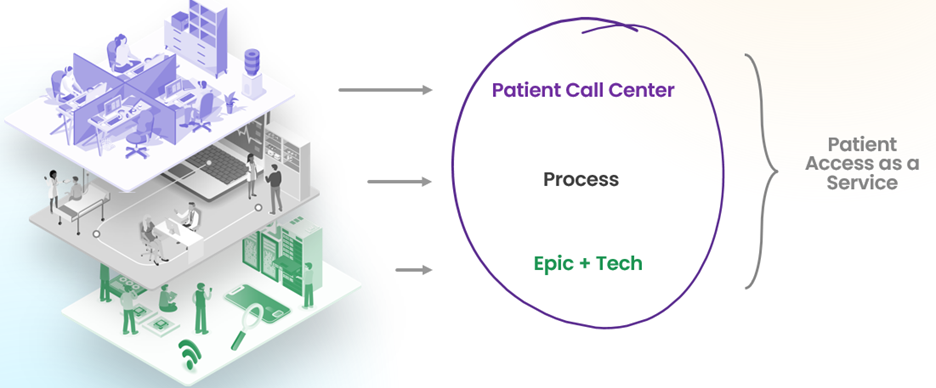
Can’t we just leverage AI to enhance patient access? In the last decade, the healthcare industry has poured over $50 billion of investment into digital health. New entrants offering on-demand healthcare models are threatening traditional healthcare practices, and patients are exercising their options – or trying to, at least. Despite throwing capital at the problem, less than 6% of all appointments are scheduled online, and appointment lead times are still weeks out for most providers.
While healthcare organizations now see patients as consumers, they have struggled to create consumer-centered solutions for patients’ access to care that drive loyalty.
Why is it so hard to crack the patient access code?
Going Under the Hood
With combined decades of experience in standing up and operating patient access operations at leading healthcare systems, Hummingbird’s team learned this hard truth: Patient access is hard because healthcare is complex. There is no magic app, high-dollar consultant, project management approach, or AI bot that will fix patient access (yet, or maybe ever).
Instead, healthcare organizations need to align technology, standard processes, and access operations in a comprehensive patient access stack, and do the hard work ‘under the hood’ to enable an excellent experience for patients and for those providing their care.
This involves unflashy but critical work like process redesign and optimization of the core EMR and customer experience technology the organization has already invested in.
Building the Foundation
The transformational work of improving patient access touches every part of a healthcare organization. To move through this process without operational upheaval and to set the stage for continual improvement and innovation, your organization will need to make three foundational commitments:
- Leadership Support: The highest levels of administrative and clinical leadership in your organization will need to commit not only to the overall vision and strategy for patient access, but also the difficult and detailed decisions that enable standardization and centralization of workflows, efficient processes, and disciplined utilization of technology.
- Effective Governance and Change Management: Following from executive and clinical leadership support, you will need effective structures for understanding challenges, making decisions, implementing programs, and communicating and managing change across the organization. Your technology and teams will need to be in lockstep to create a seamless experience for patients.
- Investment: Many organizations don’t know exactly how much they currently spend for patient access because operations are decentralized across the organization. We don’t always see the breadth of people and systems that support “patient access” holistically. The average health system (1M annual outpatient visits) is spending more than $30M on patient access annually. Long-term cost savings can be achieved through efficiency and value capture, but this requires up-front investment in optimizing existing technology, standardizing processes, and supporting and growing team members who support your patients.
So now that you know what to expect … in our next blog post we are going to dig into the “how” of improving patient access. How does your health system’s patient access strategy and operation stack up? We’ll orient you to our Patient Access Maturity Model and explain how we are benchmarking organizations and helping them craft and execute plans to level up.
